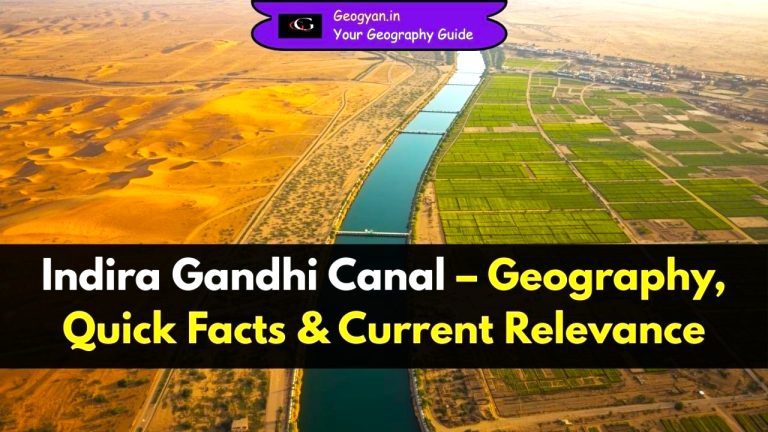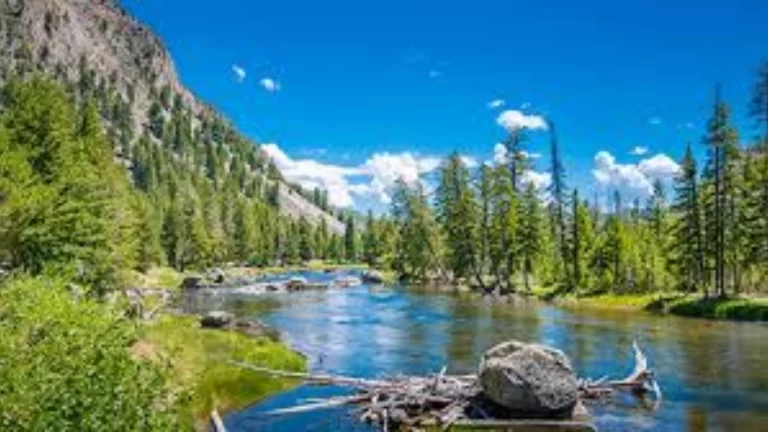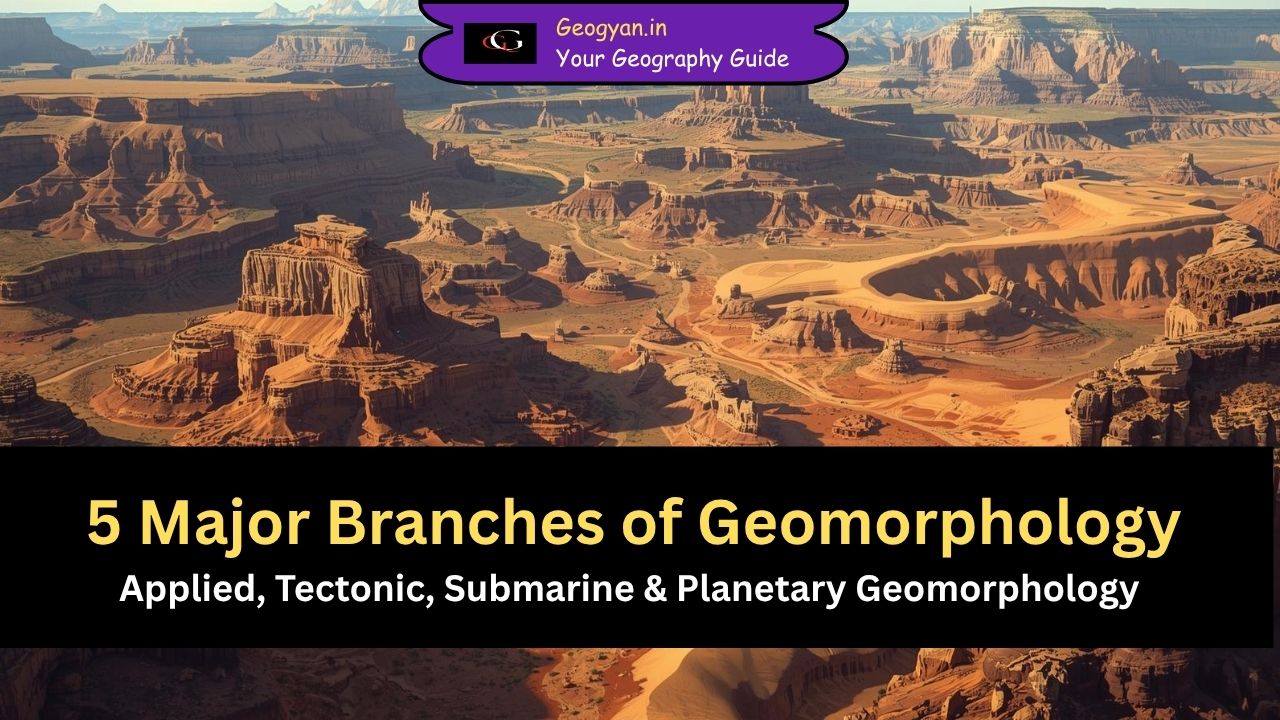Estimated reading time: 6 minutes
Preparing for competitive exams like UGC-NET, UPSC, RPSC, KVS, NVS, DSSSB, HPSC, HTET, RTET, UPPSC, and BPSC in geography requires a solid grasp of key concepts, including the Earth’s radiation or heat balance. This topic is vital as it impacts climate patterns, ecosystems, and the environment. Understanding both natural and human-induced changes in the Earth’s radiation balance is crucial for geography students. This guide provides a detailed look into the factors affecting radiation balance, offering valuable insights and examples to help you succeed in your exams and gain a deeper understanding of this essential aspect of geography.
Table of contents
The radiation or heat balance is crucial for all living organisms, including plants, animals, microorganisms, and humans. It affects the Earth’s climate and biological communities. Changes in this balance can be categorized into two types: natural changes and human-induced (anthropogenic) changes.
Natural Changes in Radiation Balance
- Solar Variations: Periodic changes in the solar constant, or the amount of solar radiation the Earth receives, affect the heat balance. For instance, the 11-year solar cycle causes fluctuations in solar radiation, impacting global temperatures.
- Volcanic Eruptions: Large amounts of dust and smoke released during volcanic eruptions can alter the atmosphere’s transparency, reducing the solar radiation reaching the Earth’s surface. The eruption of Mount Pinatubo in 1991, for example, led to a global temperature decrease of about 0.5°C over the following year.
- Plate Tectonics: The movement of continents and ocean basins due to plate tectonics can cause global climate changes. The formation of mountain ranges and ocean currents can alter atmospheric circulation patterns, influencing the heat balance.
Human-Induced Changes in Radiation Balance
Human activities have significantly altered the Earth’s radiation balance at local, regional, and global scales.
1. Local Level Impact
Human activities such as urbanization and industrialization directly affect the local heat balance.
- Urbanization: Expanding urban areas with buildings and concrete structures reduce the ground’s albedo (reflectivity), increase temperatures, and create urban heat islands. The concentration of pollutants in the atmosphere forms a “pollution dome,” trapping heat and altering the climate. For example, cities like Tokyo and New York experience temperatures several degrees higher than their rural surroundings.
- Industrialization: Factories release large amounts of dust and gases into the atmosphere, contributing to the greenhouse effect. Case studies in cities like Budapest and Hamilton show a reduction in incoming solar radiation by 7-17% due to pollution, while longwave radiation increases, trapping more heat in the atmosphere.
2. Regional Level Impact
At a regional level, human activities such as land use changes and weather modification programs also impact the radiation balance.
- Land Use Changes: Converting forests to agricultural land alters the Earth’s albedo, reducing solar absorption. Deforestation decreases the ability of the surface to retain heat, while irrigation in dry areas lowers the albedo, affecting the regional climate. For instance, the Amazon rainforest’s deforestation has significant regional climate impacts.
- Weather Modification: Activities like cloud seeding, ice melting using carbon black dust, and storm diversion alter local and regional climate patterns, further impacting the heat balance. Cloud seeding in China, for example, has been used to induce rainfall and mitigate droughts.
3. Global Level Impact
On a global scale, human activities contribute to significant changes in radiation balance:
- Greenhouse Gas Emissions: The burning of fossil fuels releases carbon dioxide into the atmosphere, increasing the Earth’s temperature by trapping heat through longwave radiation. The concentration of CO₂ has risen from 280 ppm in pre-industrial times to over 410 ppm today, significantly impacting global temperatures.
- Ozone Layer Depletion: The release of chlorofluorocarbons (CFCs) and nitrogen oxides into the stratosphere depletes the ozone layer, allowing more harmful ultraviolet radiation to reach the Earth’s surface. This increase in shortwave solar radiation raises temperatures and disrupts the global heat balance.
Conclusion
Human activities play a complex and significant role in altering the Earth’s radiation balance. These changes affect local, regional, and global weather patterns and climate systems. Although the impact is difficult to predict due to various feedback mechanisms, the consequences of these changes can disrupt the natural environment, influencing ecosystems, water cycles, and food chains. Addressing human influence on the radiation balance is crucial for maintaining the Earth’s climate and ensuring the health of all life on the planet.
Test Your Knowledge with MCQs
1. What is the primary cause of urban heat islands?
A) Increased vegetation
B) High albedo surfaces
C) Concrete structures and buildings
D) Reduced pollution
2. Which natural event can lead to a temporary decrease in global temperatures?
A) Solar flares
B) Volcanic eruptions
C) Earthquakes
D) Tsunamis
3. How do greenhouse gases affect the Earth’s radiation balance?
A) By increasing the albedo
B) By trapping longwave radiation
C) By reducing solar radiation
D) By increasing shortwave radiation
4. What is the effect of deforestation on the Earth’s albedo?
A) Increases albedo
B) Decreases albedo
C) No effect on albedo
D) Alternates albedo
5. Which human activity is directly associated with the depletion of the ozone layer?
A) Burning fossil fuels
B) Use of chlorofluorocarbons (CFCs)
C) Deforestation
D) Urbanization
6. What is the impact of cloud seeding on local weather patterns?
A) Increases solar radiation
B) Reduces rainfall
C) Induces rainfall
D) Increases temperature
7. Which of the following is a consequence of increased greenhouse gas emissions?
A) Decreased global temperatures
B) Increased global temperatures
C) Increased albedo
D) Decreased albedo
8. What is the primary component released by factories that contributes to the greenhouse effect?
A) Nitrogen
B) Oxygen
C) Carbon dioxide
D) Helium
9. How does urbanization affect the local heat balance?
A) Increases ground albedo
B) Decreases temperatures
C) Creates urban heat islands
D) Reduces pollution
10. What is the role of plate tectonics in the Earth’s radiation balance?
A) Alters atmospheric circulation patterns
B) Increases solar radiation
C) Decreases volcanic activity
D) Reduces greenhouse gas emissions
Answers
- C) Concrete structures and buildings
- B) Volcanic eruptions
- B) By trapping longwave radiation
- A) Increases albedo
- B) Use of chlorofluorocarbons (CFCs)
- C) Induces rainfall
- B) Increased global temperatures
- C) Carbon dioxide
- C) Creates urban heat islands
- A) Alters atmospheric circulation patterns
FAQs
Urbanization significantly impacts the local heat balance by creating urban heat islands. The replacement of natural landscapes with buildings and concrete structures reduces the ground’s albedo, leading to higher temperatures. Additionally, pollutants from vehicles and industries form a “pollution dome,” trapping heat and altering local climate patterns. Cities like Tokyo and New York often experience temperatures several degrees higher than their rural surroundings due to these effects.
Volcanic eruptions release large amounts of dust and aerosols into the atmosphere, which can reduce the transparency of the atmosphere and decrease the amount of solar radiation reaching the Earth’s surface. This can lead to a temporary cooling effect on the global climate. For example, the eruption of Mount Pinatubo in 1991 caused a global temperature decrease of about 0.5°C over the following year.
Greenhouse gases, such as carbon dioxide and methane, trap longwave radiation emitted by the Earth’s surface, preventing it from escaping into space. This process, known as the greenhouse effect, increases the Earth’s temperature. Human activities, particularly the burning of fossil fuels, have significantly increased the concentration of greenhouse gases in the atmosphere, leading to global warming and climate change.
You Might Also Like
- Heat Budget (Energy Balance): Understanding Earth’s Energy Flow
- The Energy System: Understanding Earth’s Energy Sources and Their Impact on the Biosphere
- Understand the Mechanisms of Heating and Cooling of the Atmosphere
- Sunspots: Understanding Their Role in Solar Activity and Earth’s Climate
- Causes of Climate Change





























